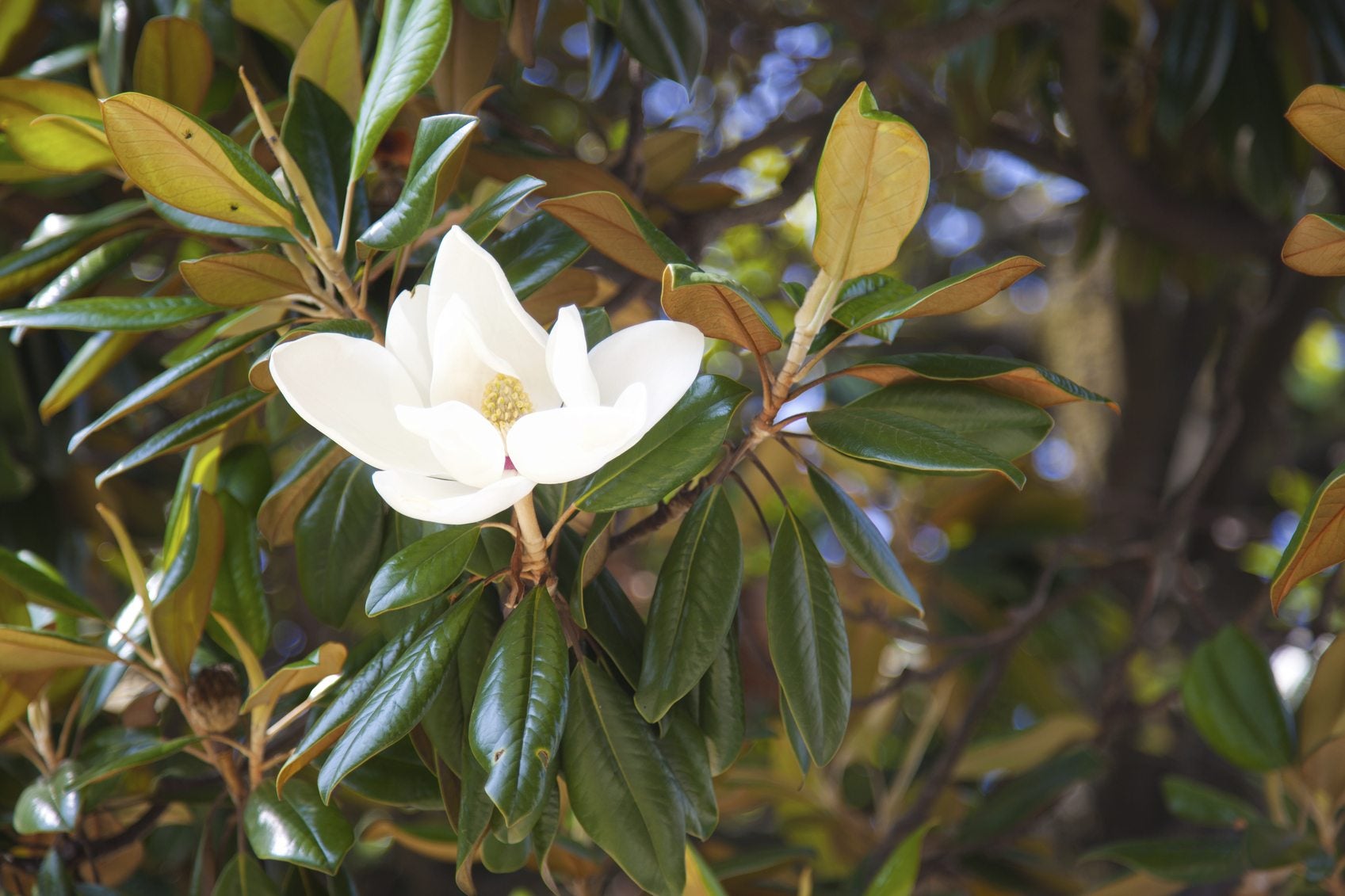Yellow Magnolia Leaves: What To Do About A Magnolia Tree With Yellowing Leaves


Magnolias are magnificent trees with early spring flowers and glossy green leaves. If you see your magnolia leaves turning yellow and brown during the growing season, something is wrong. You’ll have to do some troubleshooting to figure out the problem with your tree since there are many causes of yellow magnolia leaves, ranging from natural to nutritional. Read on for some tips on how to figure out why you have yellowing leaves on your magnolia.
Reasons for Magnolia Trees with Yellowing Leaves
If you see yellow magnolia leaves on the tree in your backyard, don’t panic. It might not be very serious. In fact, it might be natural. Magnolias shed their old leaves all year – it’s part of their growth cycle, and the older magnolia leaves turn yellow and fall to the ground. Look carefully to determine whether new leaves are growing in to replace those yellow magnolia leaves. If so, you can relax. If not, continue troubleshooting. Another reason you might have a magnolia tree with yellowing leaves is soil acidity, or lack of it. Magnolias do best when the soil is neutral to slightly acidic. Buy a soil pH tester in the garden store. If your soil is alkaline (with a high pH), you may want to consider a transplant to another location or a soil amendment to raise the acidity. Poor irrigation is another reason you might have magnolia leaves turning yellow and brown. Too little water can cause drought stress, which results in yellowing leaves on magnolias. Too much water, or soil that doesn’t drain well, can drown the tree roots. This can also cause yellow magnolia leaves. Yellow magnolia leaves can also be a symptom of sunburn or insufficient light. Evaluate the tree’s placement and figure out if sunlight could be an issue. Generally, the trees prefer a growing site that gets good light. Sometimes an iron or other nutrient deficiency can result in yellowing leaves on magnolias. Get a thorough nutrient test done on your soil and figure out what the tree lacks. Buy and apply a fertilizer that offers the missing nutrient.
Gardening tips, videos, info and more delivered right to your inbox!
Sign up for the Gardening Know How newsletter today and receive a free copy of our e-book "How to Grow Delicious Tomatoes".

Teo Spengler is a master gardener and a docent at the San Francisco Botanical Garden, where she hosts public tours. She has studied horticulture and written about nature, trees, plants, and gardening for more than two decades. Her extended family includes some 30 houseplants and hundreds of outdoor plants, including 250 trees, which are her main passion. Spengler currently splits her life between San Francisco and the French Basque Country, though she was raised in Alaska, giving her experience of gardening in a range of climates.
-
 Get Ready For A Summer Of Hummers! Grow These Full Sun Hummingbird Plants and Flowers
Get Ready For A Summer Of Hummers! Grow These Full Sun Hummingbird Plants and FlowersIf you’re lucky enough to enjoy a sunny backyard, make sure you are maxing out on your pollinator opportunities and grow these full sun hummingbird plants and flowers
By Tonya Barnett
-
 12 Lush Alternatives To A Lawn For Sustainable Spaces
12 Lush Alternatives To A Lawn For Sustainable SpacesAlternatives to a lawn are beautiful and also beneficial to your local ecosystem and its pollinators. Explore our top picks for plants to replace grass.
By Tonya Barnett